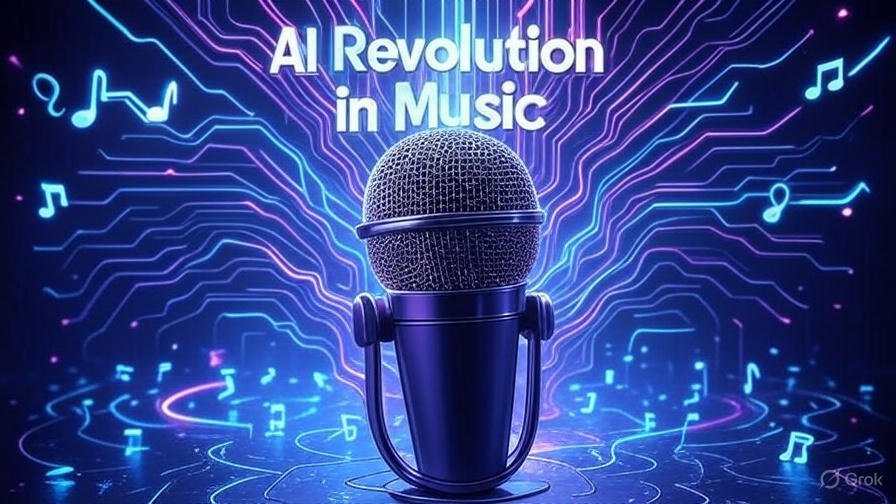AI in US Classrooms: Boosting Learning or Widening Gaps in 2025?

In 2025, the US education system is experiencing a seismic shift, driven by the integration of AI in US classrooms. As part of the tech boom, AI-powered tools are revolutionizing education through personalized learning AI, AI automating education tasks, and real-time feedback AI. These innovations are empowering teachers and students, with web sources reporting a 62% increase in test scores through adaptive learning and a 70% reduction in grading time. Yet, concerns about data privacy in education and equity in AI education loom large, as the digital divide and privacy risks threaten to widen gaps. This article explores how AI is transforming US classrooms, highlights key tools and school district adoptions, and addresses critical challenges, offering a balanced perspective on whether AI is a game-changer or a potential divider in the 2025 tech boom.
The AI Revolution in US Education
The AI in US classrooms 2025 wave is driven by the need to address longstanding educational challenges, such as diverse learning needs and teacher burnout. Web sources indicate that teachers spend an average of 13 hours weekly on administrative tasks, time that could be redirected to instruction. AI tools like adaptive learning platforms and automated grading systems are streamlining these processes, enhancing efficiency and student outcomes. Sentiment on X reflects enthusiasm, with posts noting that AI tools “free up teachers to teach,” but also caution about risks like “widening the digital gap” in underserved schools.
The 2025 tech boom has accelerated AI adoption, with over 1,000 US school districts integrating tools, fueled by federal funding from the Every Student Succeeds Act (ESSA). However, the promise of AI is tempered by concerns about equity in AI education and data privacy in education, as not all schools have equal access to technology, and data breaches pose risks to student information.
Personalized Learning AI: Tailoring Education
Personalized learning AI is at the forefront of transforming education by adapting content to individual student needs. Tools like SchoolAI and Khanmigo analyze student performance to deliver customized lessons, ensuring students progress at their own pace. Web sources report that adaptive learning platforms have increased student engagement by 25% and retention by 40%, particularly for students with diverse learning needs. For example, a student struggling with algebra can receive targeted practice, while advanced learners access enrichment activities, all within the same classroom.
How It Works: AI platforms use algorithms to assess student responses, adjusting content difficulty in real-time. Quizizz, for instance, tailors quizzes to challenge students appropriately, while Khanmigo offers 24/7 tutoring support. Sentiment on X praises these tools for “making learning feel personal,” but some educators note the risk of over-reliance, which could hinder critical thinking if not balanced with human instruction.
Top Tools:
- SchoolAI: Provides AI-driven chatbots for personalized tutoring; free for individual teachers, district pricing varies.
- Khanmigo: Offers adaptive assignments and tutoring; free in select US regions, waitlist-based access.
- Quizizz: Creates adaptive quizzes with gamified elements; free basic plan, paid from $12/month.
AI Automating Education Tasks: Easing Teacher Workloads
AI automating education tasks is alleviating teacher burnout by streamlining administrative duties. Web sources highlight that tools like LessonPlans.ai and MagicSchool generate standards-aligned lesson plans in minutes, reducing planning time by 50%. Gradescope automates grading for multiple-choice and short-answer assignments, cutting assessment time by 70%, while platforms like Microsoft Copilot for Education assist with syllabus creation and parent communication.
How It Works: Teachers input parameters (e.g., grade level, subject), and AI generates tailored lesson plans or grades assignments using predefined rubrics. For example, MagicSchool can produce a 7th-grade science lesson on ecosystems, complete with activities and assessments. Sentiment on X notes time savings but warns of occasional inaccuracies, like “misspelled worksheets,” emphasizing the need for teacher oversight.
Top Tools:
- LessonPlans.ai: Generates lesson plans; free tier with 10 lessons/month, Pro at $7.99/month.
- Gradescope: Automates grading; free for individuals, institutional pricing varies.
- MagicSchool: Comprehensive toolkit for planning and grading; free core features, Plus at $99.96/year.
Real-Time Feedback AI: Enhancing Student Growth
Real-time feedback AI provides immediate, actionable insights to students, fostering rapid improvement. Tools like QANDA and Brainly AI offer instant feedback on homework, with QANDA’s MathGPT achieving 91% accuracy in solving math problems, as per web sources. These platforms provide step-by-step guidance, helping students correct mistakes before they solidify. In classrooms, AI-driven dashboards alert teachers to struggling students, enabling timely interventions.
How It Works: AI analyzes student responses, offering hints or explanations in real-time. For instance, Quizizz adjusts question difficulty based on performance, while SchoolAI’s chatbots provide feedback during assignments. Sentiment on X highlights improved student outcomes, with posts noting “faster progress,” but some express concerns about reduced human interaction, underscoring the need for balance.
Top Tools:
- QANDA: Offers AI-driven homework solutions; free basic plan, premium from $10/month.
- Brainly AI: Provides personalized tutoring; free with ads, subscription from $7/month.
- SchoolAI: Delivers real-time feedback via chatbots; free for teachers, district pricing varies.
US School Districts’ AI Adoption
US school districts AI adoption is reshaping education, with districts like Los Angeles Unified (LAUSD) and Miami-Dade leading the charge. Web sources report that LAUSD uses MagicSchool for lesson planning, saving teachers 3–5 hours weekly, while Miami-Dade employs Quizizz for adaptive assessments, boosting engagement by 20%. Over 1,000 districts, supported by ESSA funding, have integrated AI, with rural districts like those in Texas adopting free tools like Microsoft Immersive Reader for accessibility.
Web sources note that 44% of K-12 educators use AI platforms weekly, with tools like SchoolAI enhancing inclusivity for students with disabilities. Sentiment on X praises these adoptions but highlights concerns about training, with posts noting “teachers need more support” to use AI effectively, reflecting the need for professional development.
Data Privacy in Education: A Growing Concern
Data privacy in education is a critical challenge as AI tools collect vast amounts of student data. Web sources warn that cloud-based platforms risk breaches, with 24% of districts reporting security incidents in 2024. Regulations like FERPA require strict data protection, but gaps remain. Sentiment on X expresses alarm over “data leaks,” urging schools to prioritize secure platforms like SchoolAI, which complies with privacy laws.
Mitigation Strategies:
- Choose FERPA-compliant tools like Khanmigo or SchoolAI.
- Conduct regular audits of data storage and access protocols.
- Educate teachers and students on secure data practices.
Equity in AI Education: Bridging the Digital Divide
Equity in AI education is a pressing concern, as not all schools have access to AI tools. Web sources note that 30% of rural and low-income districts lack reliable internet or devices, limiting AI adoption. This digital divide risks widening educational gaps, with underserved students missing out on personalized learning benefits. Sentiment on X calls for “tech equity,” urging federal initiatives to provide devices and training.
Solutions:
- Expand ESSA-funded programs to supply devices and internet to underserved schools.
- Promote free tools like Microsoft Immersive Reader for accessibility.
- Partner with nonprofits to provide AI training for teachers in rural areas.
Future Impacts of AI in Education
The future of AI in education promises transformative changes:
- Advanced Personalization: AI platforms will further tailor learning, improving outcomes by 30%, as per web sources.
- Immersive Learning: VR/AR integration with AI for interactive lessons, projected to reach 50% of classrooms by 2030.
- Teacher Support: AI assistants will handle 80% of administrative tasks, freeing teachers for instruction.
Web sources predict an $88.2 billion AI education market by 2032, driven by tools enhancing inclusivity and efficiency. Sentiment on X is optimistic but stresses ethical implementation to address privacy and equity concerns, ensuring AI benefits all students.
Conclusion: Balancing Innovation and Inclusion
AI in US classrooms 2025 is a double-edged sword, offering transformative benefits through personalized learning AI, AI automating education tasks, and real-time feedback AI, while posing challenges in data privacy in education and equity in AI education. As US school districts embrace these tools, the focus must be on secure, inclusive implementation to avoid widening gaps. Join the conversation below, share your thoughts on AI’s role in education, and explore more tech insights on Mehena to shape the classroom of tomorrow!





